The city of Graz has some impressive examples of sustainable tourism. I discovered how Austria’s greenest city and its eco-friendly ethos makes for deeper connections, a positive impact for the destination and a more meaningful travel experience.
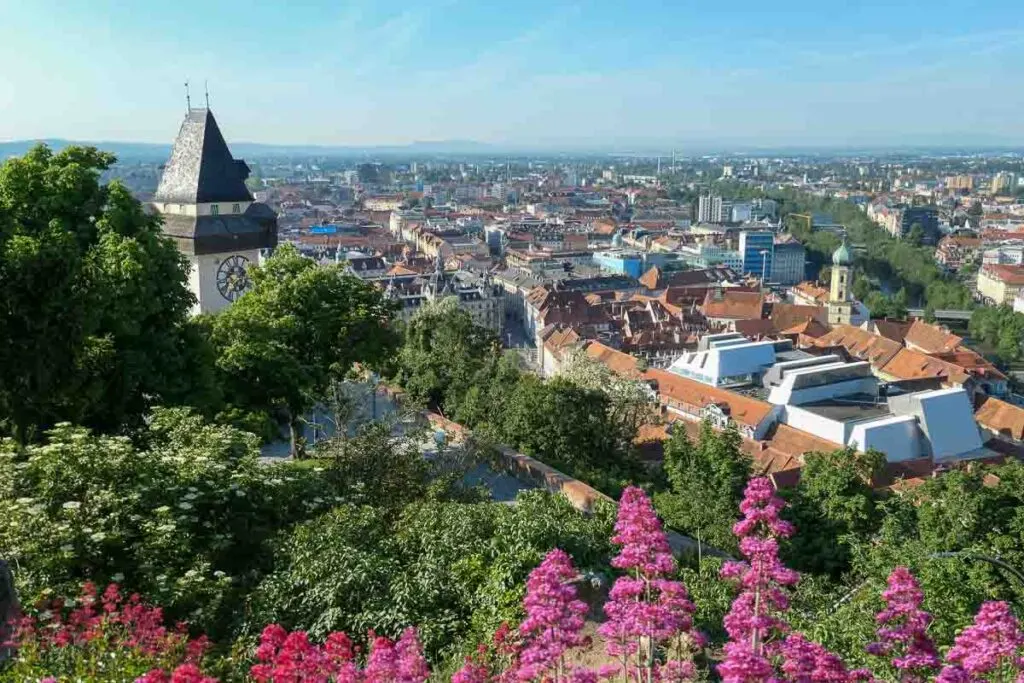
In July this year Graz was announced as one of five finalists for the European Green Capital and Leaf Awards 2025. Good luck Graz!
Greetings from Graz, Austria’s second largest, and greenest, city. Aptly located in an area known as the ‘Green heart of Austria’, this vibrant destination offers more than UNESCO World Heritage sites, innovative design and mouth-watering cuisine. The city is filled with inspirational examples of sustainable tourism and is one of the best places to learn more about sustainable travel.
Going Green in Graz
Contents
On my latest visit I explored, indulged and connected. I learnt how sustainable practices have a positive impact on both locals and visitors. From locally sourced food and drink, family-owned and run accommodation to innovative ideas and concepts.
Read on to learn how sustainable tourism can benefit the destinations you visit, the local community and elevate your own travel experience. Implementing sustainable practices into your travel routine on a personal level is so much easier than you think.
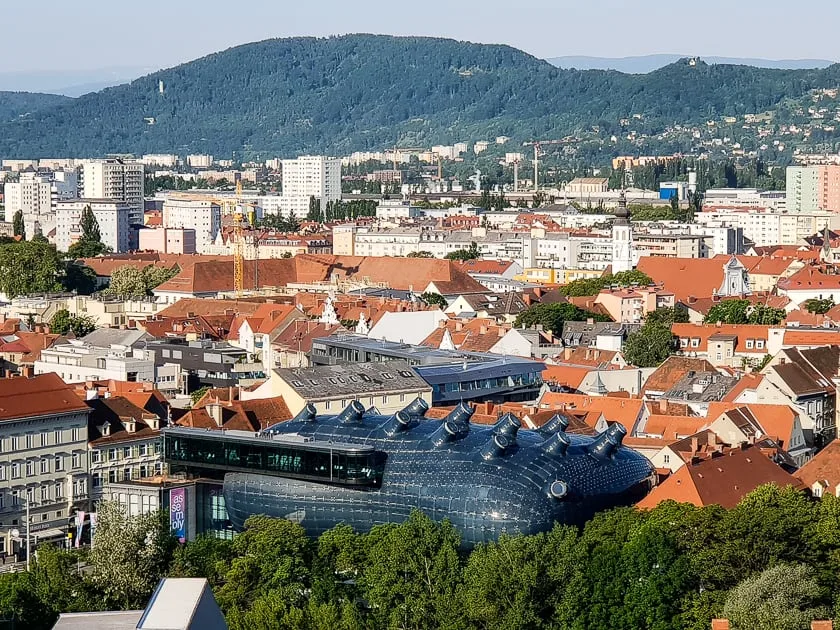
What is Sustainable Tourism?
“Tourism that takes full account of its current and future economic, social and environmental impacts, addressing the needs of visitors, the industry, the environment and host communities.”
World Tourism Organization (UNWTO)
Sustainable travel, also known as eco-tourism or responsible travel refers to making choices that minimize the negative impact on a tourist location. This includes a wide range of factors, from how we get to our destination, to the things we do, the tours we take and where and what we eat.
Can sustainable travel be affordable?
Yes, sustainable travel can be affordable. Win win! Many of the practices involved, such as supporting local businesses or choosing public transport over private vehicles are cost-effective. It’s all about planning your trip well and making conscious decisions.
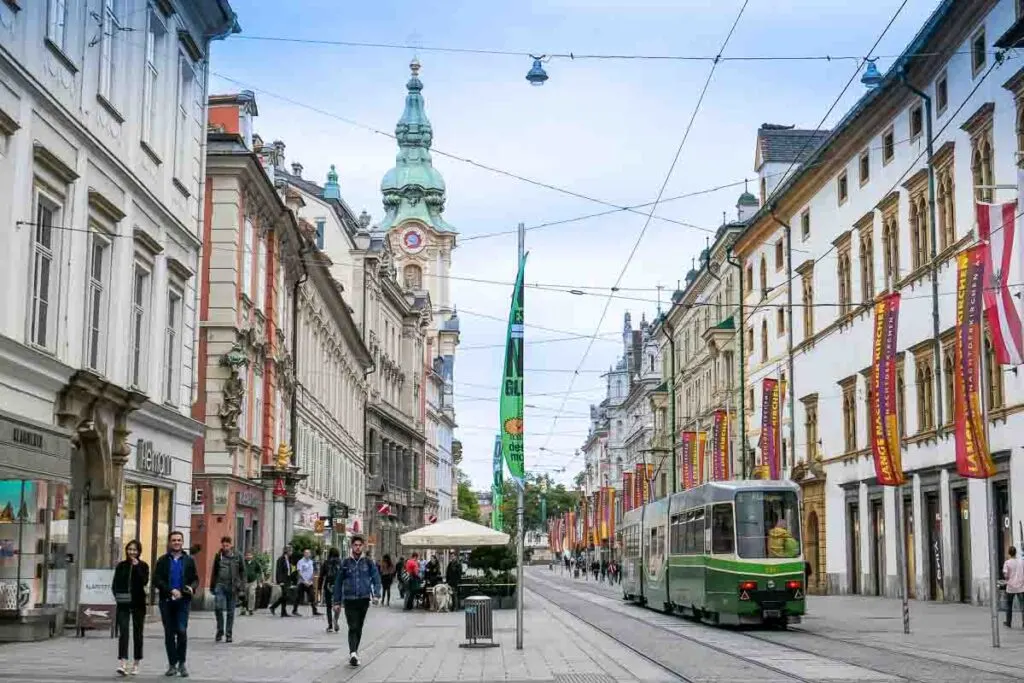
Examples of sustainable tourism in Graz, Austria
Let me share some examples of sustainable tourism I found in Graz and how the area is leading the way towards a greener, eco-friendly and more sustainable way of life. Both for local communities and visitors to the area.
What I particularly love about the sustainable side of Graz is that it has evolved organically with local people encouraging and embracing an eco-friendly, sustainable lifestyle. It only takes a little mindfulness for tourists to implement these practices too.
The sustainable travel tips below can easily be incorporated into your next trip to help you become a more responsible traveller. Why not make a promise to yourself, and the planet, to implement some of these examples on your future travels. Including sustainable tourism practices in your travels is a lot easier than you think.
Eat at locally-owned eco-friendly restaurants
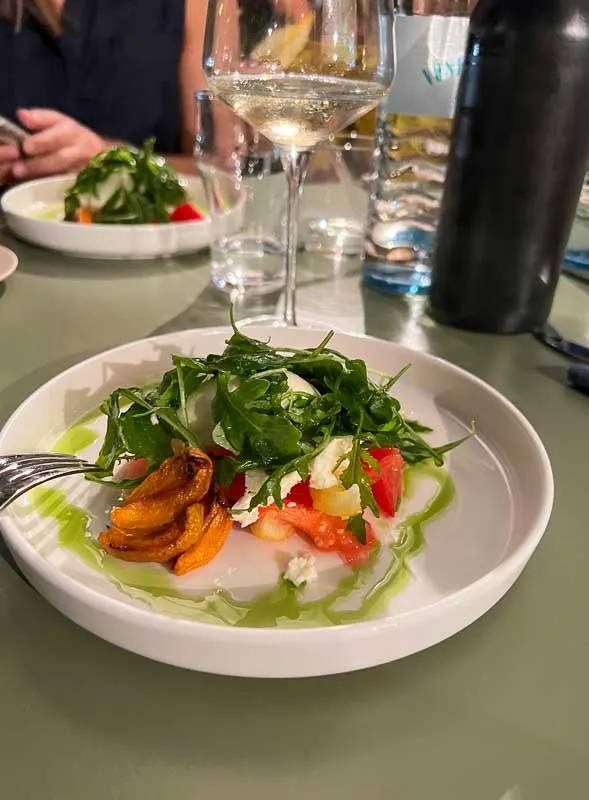
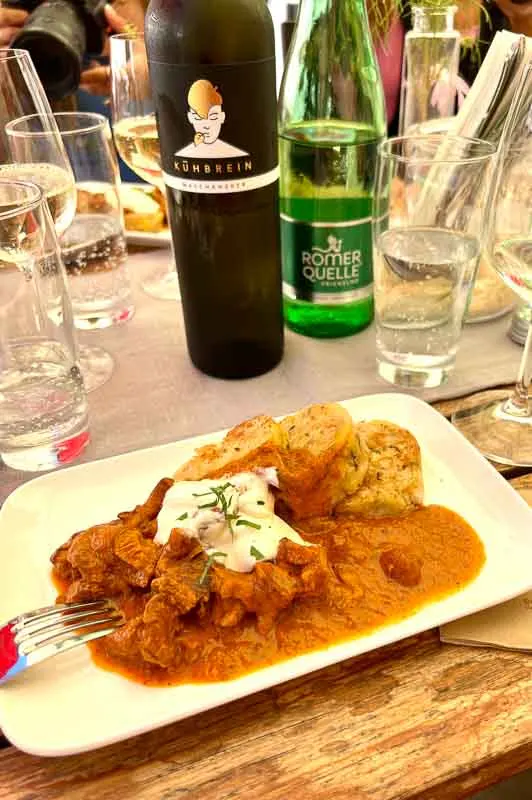
Graz sits in a region of Austria called Styria which is known as the Green Heart of Austria. It’s an area of prime agricultural land, vineyards and forests which means restaurants in Graz have easy access to the best local produce. Together with its superb regional cuisine it’s why Graz is known as the ‘City of Culinary Delights’.
Many restaurants and food stalls in Graz pride themselves on sourcing their ingredients from within 50km of the city. This farm-to-fork ethos reduces carbon footprint and helps the local economy.
An excellent example is local restaurant Die Speis am Lendhafen which has sustainability at its heart. They serve regional, seasonal and sustainable food with a zero food waste policy. I loved that the menu at Die Speis named the local farms from where they’d sourced ingredients.
Eating at an eco-friendly restaurant owned by locals is an excellent example of sustainable tourism and one of the easiest to implement. You’ll get a taste of local cuisine, help the local economy and if you eat vegetarian food you’ll also be doing your bit to help climate change.
Read more: A Food Lover’s Guide to Graz
Book a tour with a local
Local residents know their city better than anyone, so it makes sense to take sustainable tours with local guides. As well as showing you around the city’s cultural heritage they’ll share hidden gems, foodie hot spots and tips for exploring.
We took a food tour in Graz with TestEsser led by Manuela Pucher, a Graz local with a huge amount of knowledge about the region’s food and produce. Her walking tours take you on a culinary journey around Graz exploring regional food, delicacies and local traditions all the while supporting local businesses. We also met some lovely local people who are passionate about the food, their city and are proud of its sustainable development.
Fill up at one of Graz’s water fountains
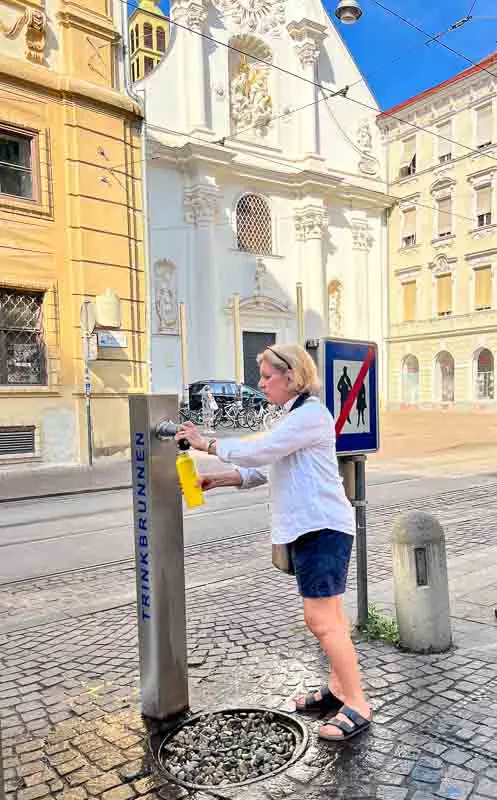

If you do just one thing ditch plastic bottles and single-use plastics and get yourself a reusable water bottle. It’s a positive change that’s easy for everyone to do and it’ll save you money and reduce plastic waste.
Top up on the go from one of over 100 drinking water fountains located across Graz. You’re never more than a few minutes’ walk from a fountain spouting fresh clean water. If you can’t find a fountain then look out for a shop with the ‘Refill Graz’ logo, they’ll happily top up your bottle for free.
I was surprised that there were no water fountains at Graz airport, although the cafe where I bought my lunch was happy to fill my flask for me.
I always travel, whether at home or overseas, with reusable water bottles. My favourite is my Hydra Flask which is still going strong after five years. The neck is wide enough to take ice cubes to keep water extra chilled. It keeps drinks cold or hot for up to 12 hours.
While we’re on the subject of reusables, think about getting yourself a reusable coffee mug. All those take away coffees are served in paper cups lined with plastic or wax which aren’t always recycled. Some coffee shops will even give you a discount if you bring your own cup.
Re-usable straws and cutlery are also more sustainable solutions.
Visit the local market


Take time to buy food from a local market. Graz has over a dozen farmer’s markets to choose from and they’re all packed with fabulous regional produce and products that you probably won’t find at home. It’s a great way to interact with local people and sample their products.
There are hundreds of farms around Graz working together in co-operatives and networks to bring their produce to the local community. You’ll find seasonal products from fresh fruits, vegetables and Styrian cheese to flowers, meats, sausages, eggs and fruit juices.
We visited Kaiser-Josef Markt, the largest of the city’s markets which sits in the square behind beautiful Graz opera house. We tried strong chewy Styrian cheese, wild strawberries and fruit juices. Stall holders were happy to chat and a local chap doing his shopping couldn’t praise the wild strawberries enough.
Pick up some local products at the market and head to one of the city parks or natural areas to enjoy your picnic.
Don’t forget to bring your own re-usable bag and cutlery. Many countries have banned plastic bags so get yourself a light, cloth bag which can fold up neatly ready for when you need it. Bye bye plastic.
Travel slowly and stay longer
Think about travelling slowly and staying longer. Spending more time in a destination allows you to develop deeper more meaningful connections in a more relaxed way.
Yes, you’ll spend a bit more, which is great for the local economy, but you’ll get to know the people, the place and the local culture better which means a more rewarding and memorable experience for you.
Buy locally made gifts and souvenirs
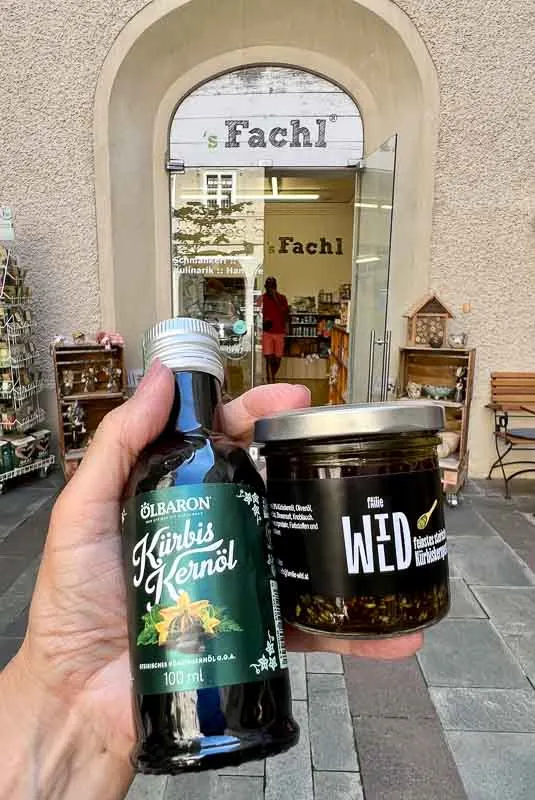
I love to bring home regional food from my travels to share with friends once I’m back home and I’ll often try a recipe out on them. I’ve made local favourite ‘bug bean salad’ a few times since I’ve been back from Graz.
If the food turns out well, it’ll hopefully encourage them to take a trip and see the place for themselves. It also means I get a taste of the destination for a while longer.
I bought pumpkin seed oil and pumpkin seed pesto home this time. Pumpkin seed oil and other pumpkin products are a huge industry in Styria. If you’ve never had pumpkin seeds dipped in chocolate, you’re missing out big time!
‘s Fachl is a shop in Graz which offers small producers the opportunity to sell their wares without the overheads of a shop. Makers rent a small wooden crate (called a fachl) and display their products in the shop, re-stocking when required.
It’s a great place to shop for local delicacies and the shelves have an array of locally made goods from pumpkin seed products to gin, chutneys, fruit juices, jams and wine. There are also handmade wooden gifts, utensils and crafts.
Gut Schlossberg is a tasting room, shop and restaurant where you can sample and buy local products.
The tourist office in Graz and Kunsthaus Graz shop also stock a range of local products and souvenirs.
Stay in a family owned hotel
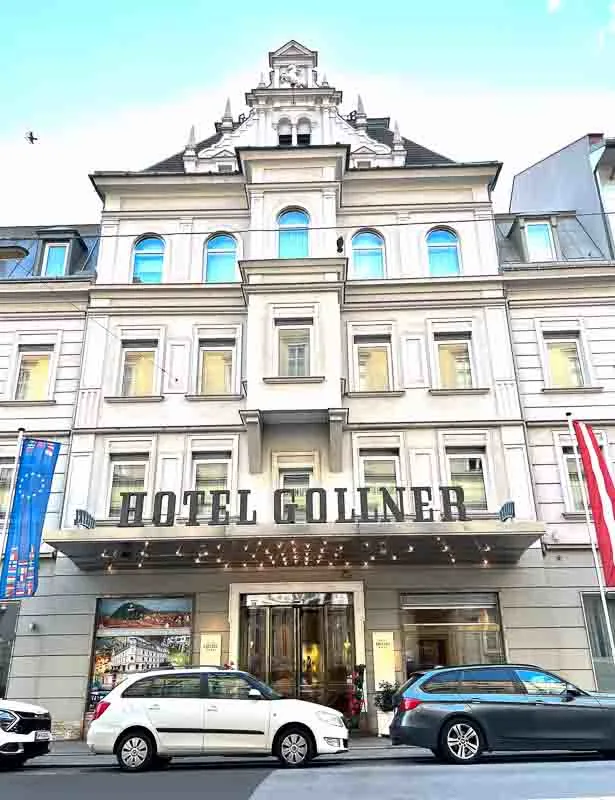
Avoid the big chain hotels and opt for family owned and run hotels or B&Bs with green certification programs. Check if the hotel actively conserves water, energy, and other resources.
On this visit I stayed at Hotel Gollner which has been owned and run by the Gerlach family since 1960. The hotel is in a central location near to the Opera House and within easy walking distance of the town centre. Or take the free tram.
Many of the family work in the hotel and it was a pleasure to chat to Alexander one of the younger members of the family who worked on reception. His mother Christina and other family members were often around the hotel and they couldn’t have been more friendly or accommodating. The hotel buys from local farmers and producers and breakfast each day was a colourful display of fresh, tasty local foods.
If you visit be sure to say hello to the hotel pet dog Luna. The gorgeous golden Labrador loves to greet guests with a wag of her tail. Needless to say Hotell Gollner is dog friendly so your pooch can stay too.
As well as staying in a family-owned hotel there are other things you can do to help reduce your carbon footprint.
Does your room really need fresh towels and cleaning every day? Re-use and help save on resources.
Many hotels have already ditched small plastic bottles of shampoo, conditioner and shower gel and have one large refillable bottle available. Go one step further and bring your own solid shampoo bar and do away with the plastic completely.
Remember to turn off the lights and air-conditioning when you leave the room, don’t leave the tap running when cleaning your teeth and take a shower instead of a bath if you can.
AirBnBs
Just a word on AirBnBs at this point. Many cities are now overrun with AirBnB properties. This is because tourists see them as a cheaper accommodation option and are happy to pay more than the ‘local value’ to rent them.
In some places like Barcelona and Lisbon this has priced some local people out of the rental market and is causing housing problems.
Support eco-friendly businesses
Visit businesses that pay special attention to eco-friendly ideas such as water recycling, waste management, solar energy and other long-term sustainability practices.
There are some excellent examples in and around Graz and we visited some inspiring eco-friendly businesses. Pipifein distillery makes gin and rum using solar power and their waste products go to a biogas factory to produce energy for the area.
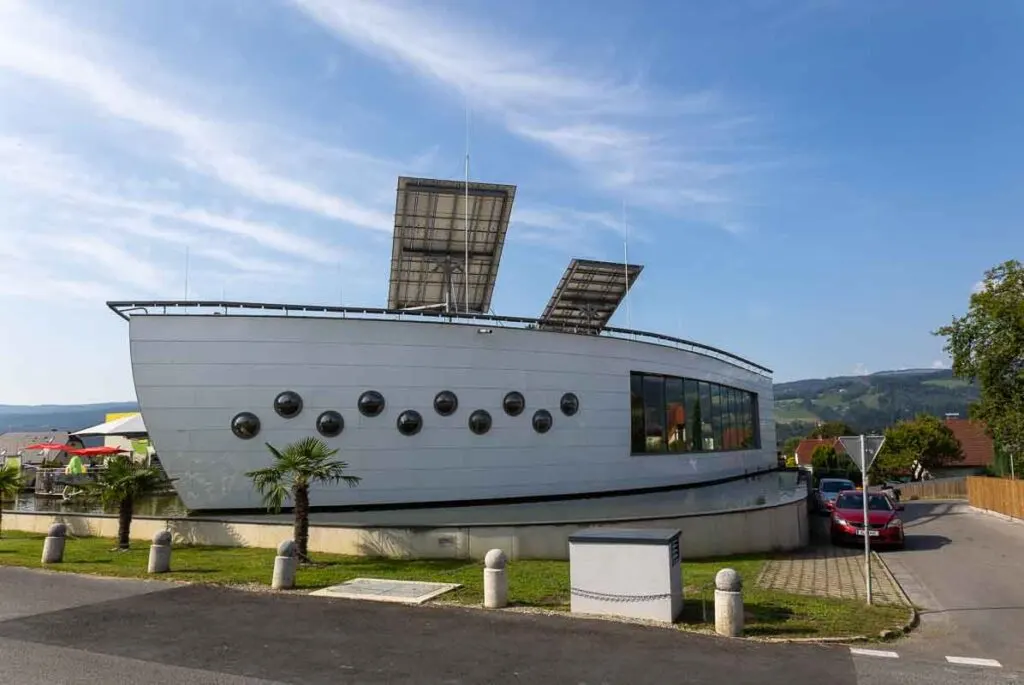
Breakfast at Café Energieschiff Mochart was an eye-opener as well as being very tasty. The building, about 45-minutes from Graz, is a passive house shaped like a boat. The photovoltaic sails on the roof produce renewable energy.
The building is also the headquarters of Mochart company and the boat symbolises the transition into a new era of technology. Their innovative technology for sustainable and renewal energy and conservation of natural resources is impressive. The well-being of the local people and their employees is an important aspect of their business too.
Get around Graz Sustainably
It’s easy to get around Graz sustainably with an easy to navigate transport system and network of cycle paths. Graz is green tourism at its best.
On foot
The best way to explore with minimal impact is on foot – my preferred way of seeing the city. Graz is incredibly walkable so pack comfy shoes and explore the historical sites, hidden courtyards, parks and green spaces at your own pace.
By bike
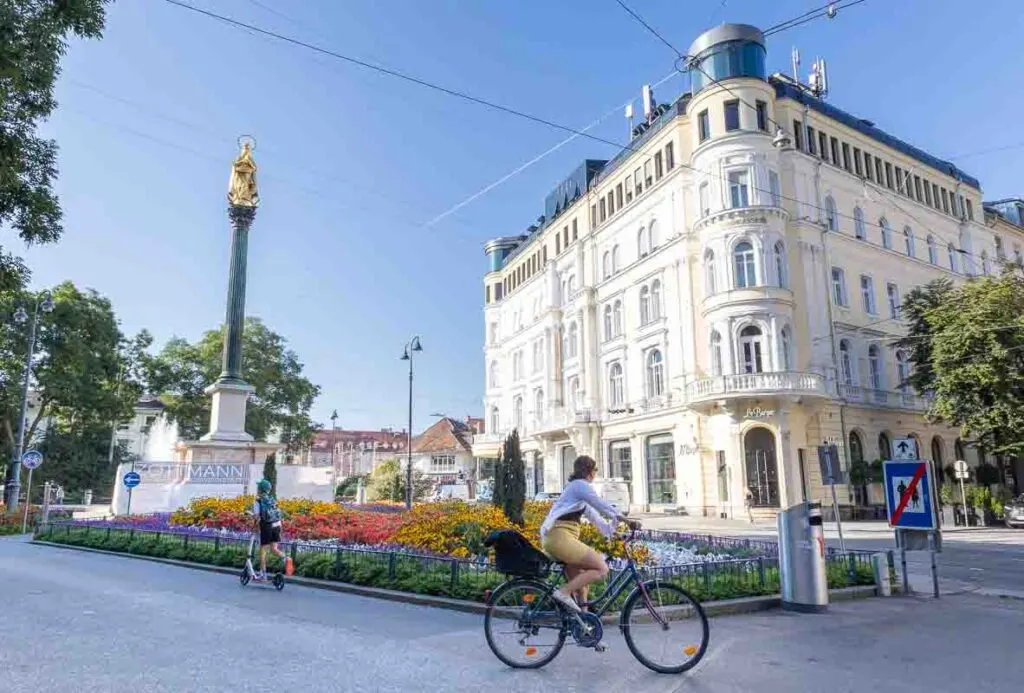
Cycling is also a sustainable and healthy way to get around Graz and further out into the natural beauty of the surrounding region. Graz is bike friendly with a good system of bike lanes to make use of with thirteen main cycle routes running alongside the river Mur both north and south.
Bike hire is easily accessible including e-bikes and mountain bikes. Graz is hoping to double the number of cyclists in the city by 2025.
By tram and bus
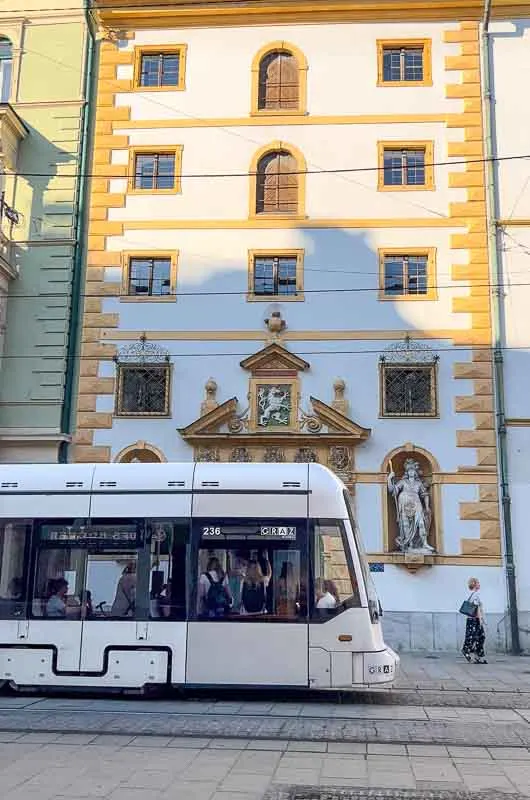
Public transport in Graz is excellent with trams and green hydrogen-powered buses helping locals and visitors get around the city.
The old town tram is free to use and has social benefits improving the quality of life for locals and is a bonus for tourists. The free tram route goes between Jakominiplatz and Hauptplatz, plus one more stop in each direction. Look out for the AltStadtBim stickers on the tram stops.
By train
Train travel is a practical and affordable way of seeing more of Austria from Graz. On a previous visit to Graz I took the train to the South Styrian Wine Route around 30-miles from the city. Austria has a good rail network with frequent trains to all parts of the country and to Vienna every hour.
Graz Central Station is 1.5 km from the town centre or a 20-minute walk from Kunsthaus Graz.
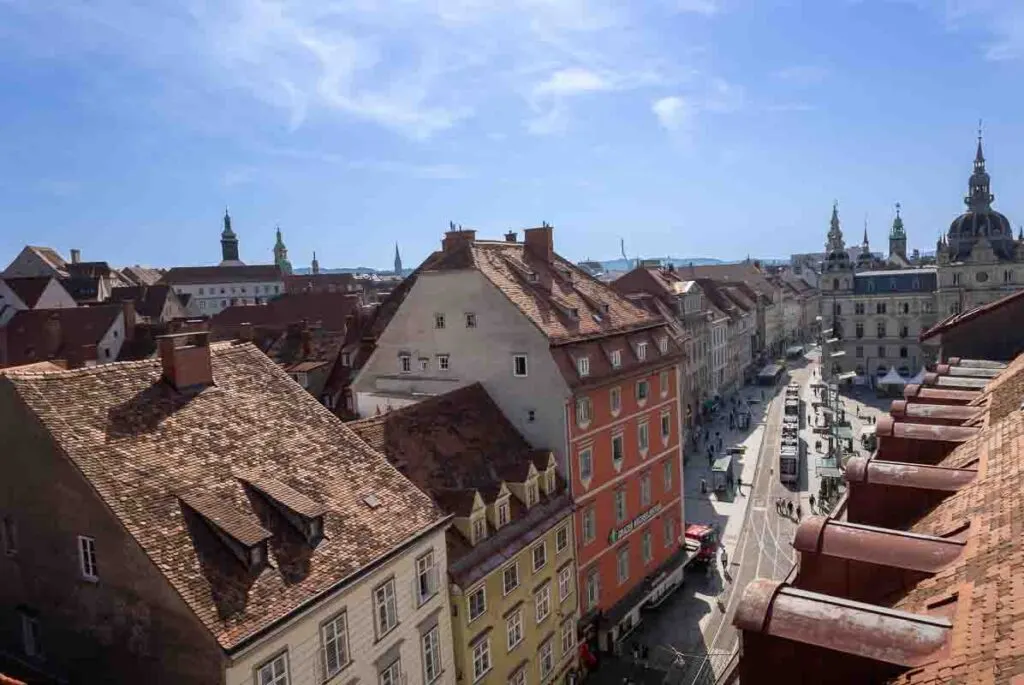
Moving forward sustainably
These are just some examples of sustainable tourism that I encountered in Graz. The city proves that sustainable travel and memorable trips can go hand in hand and offer a more rewarding experience to both the traveller and the destination.
I try and implement as many of the above examples as I can when travelling, and at home too, but there’s always room to live and travel more sustainably. By travelling sustainably, we can help ensure that future generations can enjoy these places as much as we have. And that’s something we all want isn’t it?
Disclosure: I was invited to Graz as part of the ‘travel deeper’ campaign with Visit Graz. All thoughts and opinions are entirely my own.
Read more about Graz
25 cool things to do in Graz, Austria’s second city
Discovering the south Styrian wine road
Pin it for later…
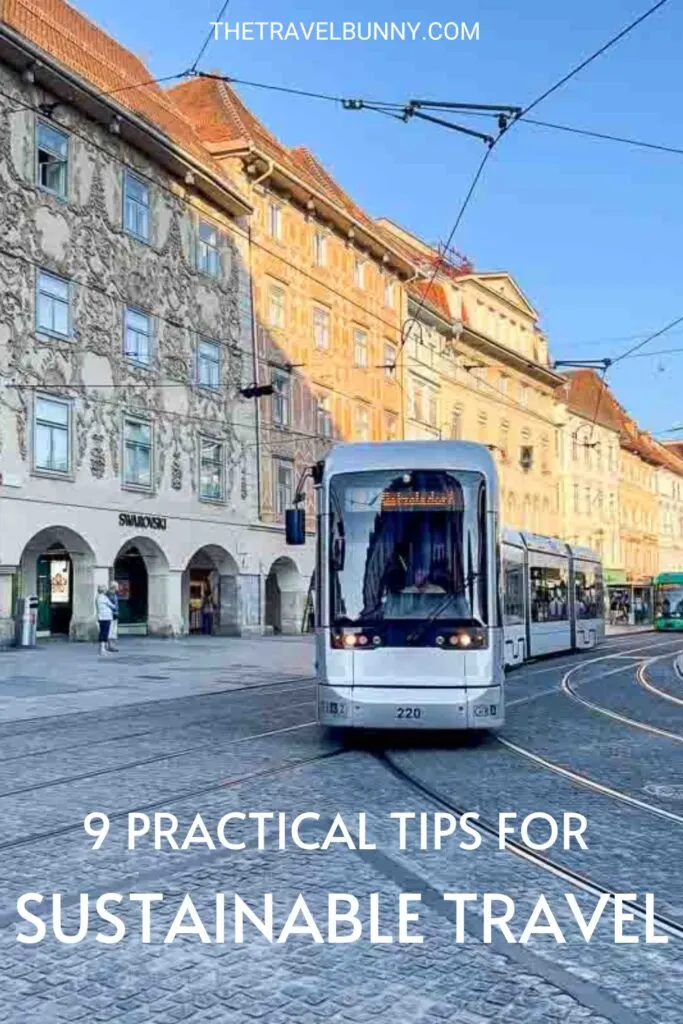
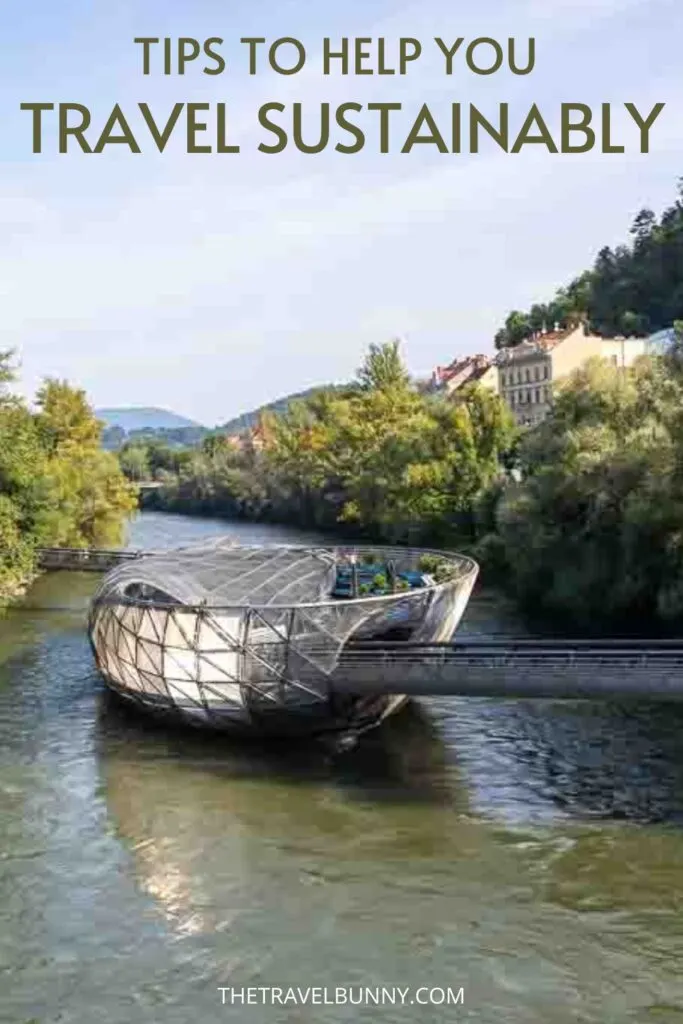

Suzanne Jones is a full-time travel blogger and writer at The Travelbunny website which she started in 2011 during her time as a professional travel planner. This serial traveller enjoys exploring new destinations, culinary encounters and the outdoors. When she’s not indulging her wanderlust or writing about her adventures you’ll most likely find Suzanne, camera in hand, enjoying coastal walks on England’s South Coast.
Suzanne also runs Hello Sussex a website which showcases the best of East & West Sussex. Read more about Suzanne here…

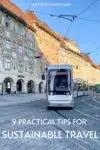

oneearthhotels
Thursday 30th of November 2023
Graz sounds great and this is definitely on my places to visit soon!